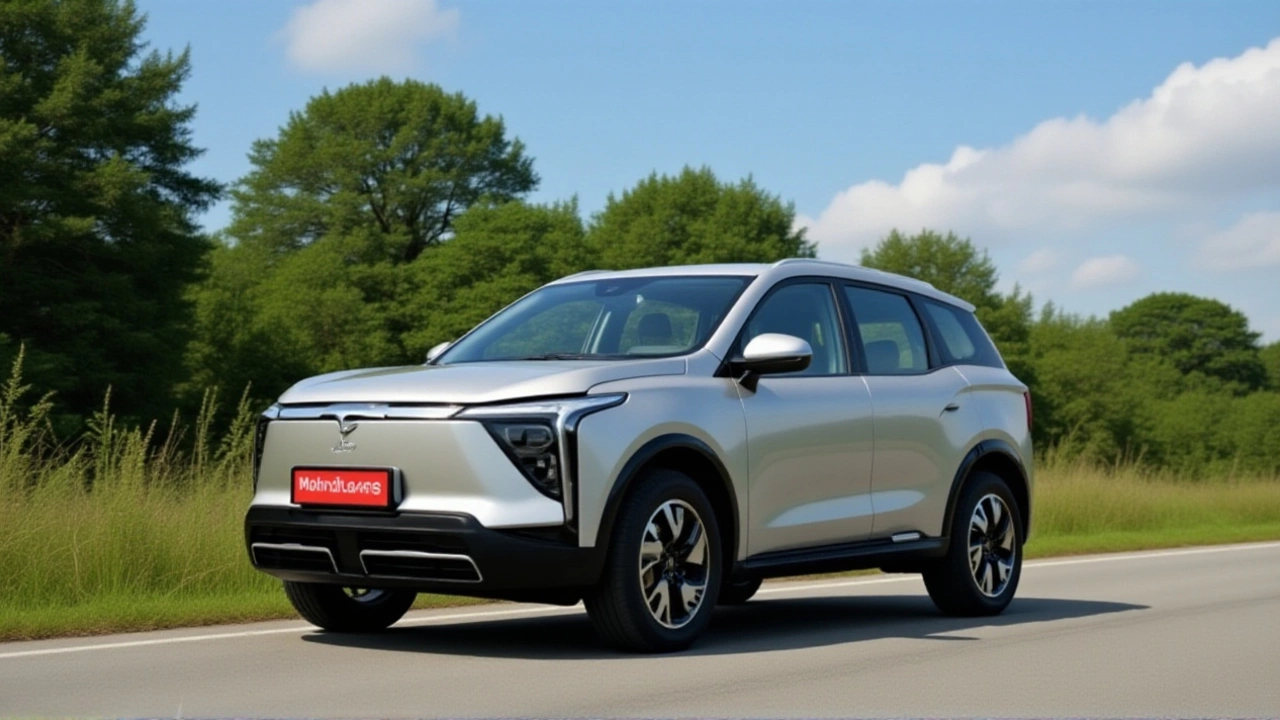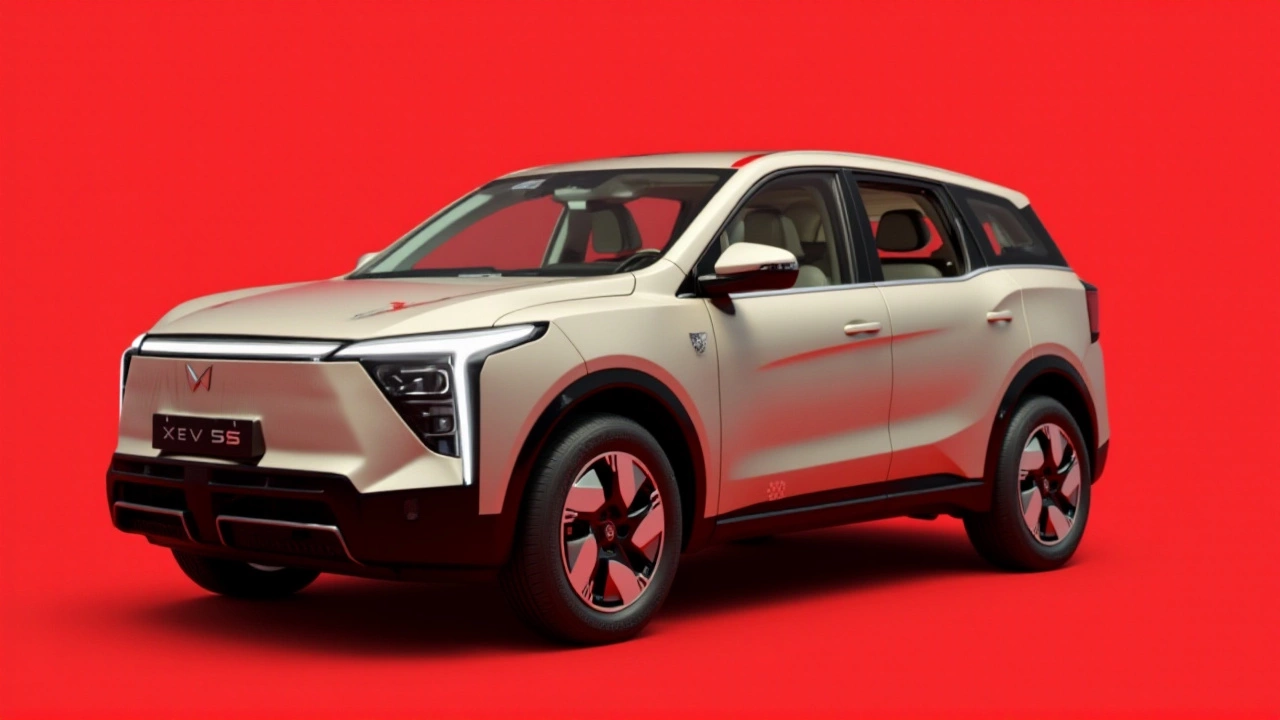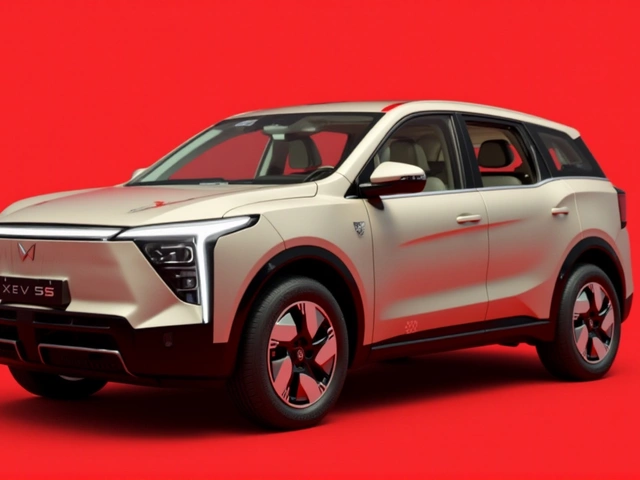On November 27, 2025, Mahindra & Mahindra Limited dropped the bombshell no one saw coming: India’s first ground-up electric 7-seater SUV, the Mahindra XEV 9S, hit the market at an astonishingly aggressive starting price of Rs. 19.95 lakh ex-showroom. It’s not just another EV. It’s a statement. A bold, triple-screened, panoramic-roofed middle finger to the idea that families in India must choose between affordability and electric mobility. And it’s built on the company’s new INGLO architecture—a platform designed to carry Mahindra’s entire electric future.
Why This Isn’t Just Another EV Launch
Most electric SUVs in India are either converted ICE vehicles or two-row models. The XEV 9S? It was born electric. No compromises. No retrofitting. That matters because third-row space in EVs has always been an afterthought—cramped, poorly ventilated, and often an afterthought in design. But Mahindra didn’t just squeeze in two extra seats. They redesigned the cabin from the ground up, with premium materials, ambient lighting, and a triple-screen layout that feels more like a Tesla Model X than a budget Indian SUV. And yes, there’s a panoramic sunroof. For a car under Rs. 20 lakh.
The range options are equally thoughtful: 59kWh (521 km), 70kWh (610 km estimated), and 79kWh (679 km). That 79kWh battery isn’t just for luxury—it’s for road trips across India without charging anxiety. Compare that to the Tata Harrier EV’s 600 km claim or the BYD eMax7’s 650 km. The XEV 9S doesn’t just match it—it beats it on value.
The Pricing Play: Undercutting Its Own Models
Here’s the twist: Mahindra undercut its own electric sedan, the BE 6, by just Rs. 1 lakh, while slashing Rs. 1.9 lakh off the XEV 9E—its previous 7-seater EV. That’s not a mistake. It’s a strategy. They’re cannibalizing their own higher-priced models to flood the market with a compelling alternative. Analysts at NDTV called the base Pack One Above variant the "value king" of the lineup. And they’re right. At Rs. 19.95 lakh, it’s cheaper than the Tata Harrier EV’s entry model (Rs. 21.49 lakh) and nearly Rs. 1 lakh below the BYD eMax7’s lowest trim.
And here’s the kicker: these are introductory prices. Mahindra’s track record is clear—once demand spikes, prices rise. The XUV700’s EV version saw a 12% price hike within six months. Expect the same here. Buyers who wait? They’ll pay more. That’s why test drives begin January 5, 2025, and bookings open January 14, 2026. Deliveries start January 23, 2026. The window is narrow. And the pressure is on.

Who’s Really Affected? The Indian Family
India has over 12 million families with three or more children. Most own SUVs. But electric? Only 3% of them even consider it. Why? Range anxiety. Charging infrastructure. And price. The XEV 9S attacks all three. A 679 km range means you can drive from Delhi to Chennai without a single charge. The triple-screen setup keeps kids entertained. The panoramic roof? That’s not just a feature—it’s an emotional sell. Parents want their kids to feel the sun. To see the stars. To not feel like they’re stuck in a box.
And it’s not just about the car. It’s about trust. Mahindra’s name carries weight in India’s middle class. Unlike Tesla or BYD, they’re local. They repair your car in small towns. They’ve been here since 1945. That matters when you’re spending Rs. 25 lakh on a family vehicle.
What This Means for India’s EV Race
Before the XEV 9S, India’s electric SUV market was a two-horse race: Tata and Hyundai. Now, Mahindra has planted its flag in the three-row segment—where no one else has dared to go. The Kia Carens Clavis EV? It’s a 5-seater pretending to be a 7-seater. The MG ZS EV? Too small. The XEV 9S? It’s the first true 7-seater EV made for Indian roads, Indian families, and Indian budgets.
Industry watchers at Autocar India predict it could outsell both the XEV 9E and BE 6 combined. Why? Because it solves a real problem. No other EV in India offers this combination: space, range, tech, and price—all in one package.
This isn’t just a product launch. It’s a milestone in Mahindra’s broader goal: to capture 20% of India’s EV market by 2030, as announced by Anand Mahindra during the company’s August 15, 2024 AGM in Mumbai. The XEV 9S is the first real step toward that target. And if it sells even half as well as expected, it could accelerate India’s EV adoption by years.

What’s Next?
By mid-2026, expect Mahindra to unveil the XEV 9S’s hybrid sibling—a plug-in variant with extended range for rural buyers. Also on the horizon: a 9-seater version for commercial fleets. And the INGLO architecture? It’s already being adapted for a compact EV SUV and a pickup truck. This isn’t a one-off. It’s the start of a revolution.
Meanwhile, Tata and Hyundai are scrambling. Both have 7-seater EVs in development—but none are expected until 2027. Mahindra isn’t just leading the race. They’ve changed the track.
Frequently Asked Questions
How does the Mahindra XEV 9S compare to the Tata Harrier EV in real-world use?
The XEV 9S undercuts the Tata Harrier EV by over Rs. 1.5 lakh in its base variant while offering better third-row space and a longer claimed range (679 km vs. 600 km). More importantly, the XEV 9S’s triple-screen setup and premium interior materials feel closer to a Rs. 30 lakh SUV, making it a stronger value proposition for families prioritizing comfort over brand loyalty.
Why is the base XEV 9S priced so low compared to competitors?
Mahindra is using the base model as a market entry point to drive volume and brand penetration. By pricing it below the BYD eMax7 and Tata Harrier EV, they’re targeting middle-class families who previously couldn’t afford a true 7-seater EV. The company expects to recoup margins through higher-margin variants and future software subscriptions, following the Tesla playbook.
When will the XEV 9S be available outside India?
Mahindra has not announced any international launch plans yet. The XEV 9S was designed specifically for Indian road conditions, charging infrastructure, and family needs. However, if sales exceed 10,000 units in the first year, exports to Southeast Asia and Africa could follow by 2027, especially in markets with similar family vehicle preferences.
What’s the warranty and charging support like for the XEV 9S?
Mahindra offers an 8-year or 160,000 km warranty on the battery and electric drivetrain—among the best in India. The company also plans to install 1,200 new DC fast chargers at its dealerships by end-2026, with 70% located in Tier-2 and Tier-3 cities. This infrastructure push is critical, as over 60% of XEV 9S buyers are expected to live outside metro areas.
Is the XEV 9S eligible for any government subsidies?
Yes. The XEV 9S qualifies for the FAME II subsidy of up to Rs. 1.5 lakh for vehicles under Rs. 25 lakh. Buyers of the base 59kWh variant (Rs. 19.95 lakh) can effectively pay under Rs. 18.5 lakh after subsidy. Higher variants above Rs. 25 lakh lose eligibility, which is why Mahindra’s pricing strategy carefully skirts that threshold.
How does the INGLO architecture differ from previous Mahindra EV platforms?
Unlike earlier EVs based on modified ICE platforms, INGLO is a purpose-built electric architecture with a flat battery floor, optimized weight distribution, and dedicated space for cooling and charging systems. This allows for better handling, more interior space, and improved safety. It’s the same platform that will underpin Mahindra’s next 10 EVs, making the XEV 9S the first of a new generation—not just a standalone model.






